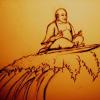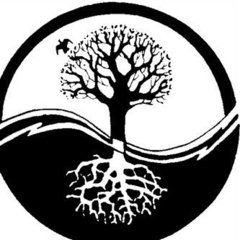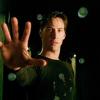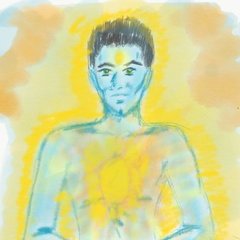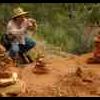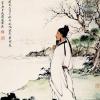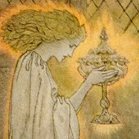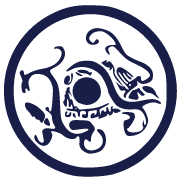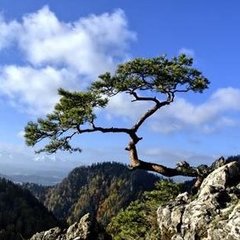Search the Community
Showing results for 'Dream'.
Found 7,590 results
-
Ive had a crushing pounding headache since this morning after waking up from a dream of being attacked by a wolf. I'm getting seriously bad vibes from somewhere, can sense subtle black smog around me, my head feels like its being squeezed, and can't shift awful negative state of mind... eyes were also burning and stinging earlier, i couldn't keep them open it was so bad.. Also had burning marks appear on forehead earlier briefly, and eyes were being strange, felt like some kind of adjustment, due to internal or external reason i dont know... It feels like more than one person are united in their negative intent towards me... i don't know if this is my imagination, or its people, or dark forces... not in a state of mind to tell... Now, i've tried praying, putting up a shield, and tuning into the higher levels, but its not working! Can anyone either give suggestions for diagnosing what is happening, or suggest what i can do about it please? its been going on for about 5 or 6 hours now... Thanks, Edward
-
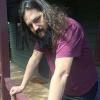
The truth behind the Law of Attraction
Seth Ananda replied to Nikolai1's topic in General Discussion
Law of attraction is based on the foundation Idea that the Universe is Mental. in other words, it is a big consciousness or divine mind, and it 'Imagines' everything into being, including us. But in the case of us, we {and other sentient beings} are a microcosm of the Divine mind, and we have the same spark of Divine mind within us. So what we dream of, desire, fear, imagine, think about, believe and so on, is all constantly 'creating' the reality around it. Some points to consider about this ancient worldview: 1.) Life will never be 'perfect' { as in no problems ever } forever despite our manifesting skill} as the Big Minds dream is primarily one of Duality. The play of consciousness is one of forgetting and remembering... 2.) One will not win the Lotto, just becase one 'wants' to, because everyone else who buys lotto tickets are also 'wanting' to win. But if your signal to the universe is far stronger than anyone elses, then that may be a different story... Cynthia Stanford won 112 million by spending 4 months constanty visualising untill she was absolutely certain she would win. which she did. 3.) The Divine mind may have its own plans for you at times, regardles of what you want or try to manifest... 4.) You may actively work against yourself. Like trying to will for money, yet hating rich people or having some personal belief that you will never 'make it' in the world... -
Wow...sounds like this sure was an amazing workshop! Truly wish I could have been there with everyone . I actually tuned into the energetics of the workshop during the weekend and WOW was it powerful. My regular SM qigong practice felt many times more vibrant and all weekend I felt a strong sense of timelessness. In fact during the weekend one night I actually attended a dream SM workshop where Ya Mu actually projected to me and I awoke feeling extra energized...do wonder if the dream attendees I met corresponded to the actual attendees last weekend . Kinda goes to show even if you can't physical make it to a workshop, there no reason you still can show up in spirit
-

So what's the deal between qigongs and dreams?
doc benway replied to qicat's topic in Daoist Discussion
Most people who practice run in to that obstacle. The realization that "I am dreaming" leads to excitement which destabilizes the realization and we either wake up or find ourselves in another dream. Since we have to sleep every night, there's nothing to lose by continuing the practice! These practices are far from useless but they do take an enormous amount of patience and dedication, especially for those of us not living in monastic circumstances. I think it also helps a great deal to have transmission from a lineage master. -

Light sleep, intense dreaming, the liver and TCM
Protector replied to madMUHHH's topic in General Discussion
Hey, where have you been? I also have intense dreams lately. Mostly about me chasing something, and as I run through the city there are a lot of details to it. Sometimes I would wake up from a dream and still see it and then go back to sleep. Kinda like being half awake half asleep and still thinking about the dream while I know I'm in my bed. -
you are lucky try jumping of the buildings in those states... It makes you REALLY believe that you are sleeping even if everything is "very real". My reasoning is simple: heck, if I am sleeping and controlling my dream, then I can jump of the building and nothing will happen. And if I am not sleeping and at the rooftop in "real life", well, perhaps that's the "end of the road". Happily for me so far it had been dreams... I wonder where Matrix movie got their ideas... Is it like a common test or something?
-
Winyanktehca: Two-souls person Marjorie Anne Napewastewiñ Schützer "I stood among them but not of them." I am 'Sihasapa', 'Lakota', or rather, that is to say that I am of the Blackfoot tribe. We are one of seven tribes of the Sioux nation. I am Native American. An old Lakota word, "Winyanktehca," has today been contracted to the simple word, "winkte," meaning, 'two-souls-person,' or more directly meaning, 'to be as a woman.' (I would like to suggest that in this speech, I will make use of the word 'winkte' synonymously for 'gender-crosser,' in either direction.) I am 'Wakan' - to my people I am sacred and mysterious, I am a spirit person. The Grandfathers tell me this. I have my feet rooted in the earth of my ancestors and my spirit soars with them in the "land above the pines." The anthropologists call me 'Berdache,' but this is wrong. This word has come a long way from its beginnings in Arabia. It means "kept boy" . . . that, I am not. The Western medical community calls me 'transsexual', but this is not entirely true either. I am 'winkte,' I am a gender-crosser. My people see me as multidimensional and I do not have to fight for a place in my society to be accepted. I already have a place, a very special and sacred place. In my culture I represent a profound healing, a reconciliation of the most fundamental rift that divides us, human from human - gender. I was called through a vision, by "Anog Ite", (Double Face Woman) from out of the womb, to be that which I am. She offered me a choice. Lakota deities never order. My gender transformation was called for by the Spirits. She blessed me with skills of a supernatural kind. One of our 'Wicasa Wakan.' or Medicine Men of today, John Lame Deer, says in his book, Lame Deer, Seeker of Visions, 'winkte' are men who dress like women, look like women and act like women. They do so by their own choice or in obedience to a dream. They are not like other men, but 'Wakan Tanka', the Great Spirit, made them 'winktes' and we accept them as such. To us a man is what nature, or his dreams, make him. We accept him for what he wants to be. That's up to him. In our tribe we go to a 'winkte' to give a new born child a secret name. They have the gift of prophecy, and the secret name a 'winkte' gives to a child is believed to be especially powerful and effective. In former days a father gave a 'winkte' a fine horse in return for such a name. If nature puts a burden on a person, it also gives a power and that which I produce with my hands is "highly desirable." Anog Ite has set my feet on both sides of the 'line' and I can see into the hearts of both men and women. We are hunters and we keep the house, we cook and do beadwork. I . . . have chosen the path I have walked. In the Lakota language there are no personal pronouns and a child is simply a child until the age or four or five, when he or she shows that which they are. I have a place also, in this . . . your society. My people have always held their 'winkte' in awe and reverence and before the 'white-man' came to the 'new world' we were many. But our numbers shrank and we began to hide within ourselves as our religious systems were attacked and shattered by western attitudes. Because of the impact of white ridicule we had all but disappeared. Because of the enormous difference between European societies and Native American societies, differences which theoretically rules out any comparison of their respective sex and gender roles, we must ask ourselves, "What is being lost?" Is it possible that within a Native American interpretation we see something that a Western point of view cannot? Being Lakota, I know myself as something precious and the dignity in such knowing pulls me to my full tallness. Being 'winkte' however, allows me the full capability of achieving a strong ego identity, originality, and an active inner life, which is characteristic of adult individuation and personality development. We are "shamans." We are called upon to bestow secret and powerful names on the new born, names which represent 'long-life' and which could lead to fame. Sitting Bull, Black Elk, even Crazy Horse had a secret 'winkte' name which only a few people knew. These names are often very sexy, even funny, very outspoken. You don't let a stranger know them; he would kid you about it! We were consulted to divine the success of proposed battles. We were tied closely to the war complex, we were even a crucial part of it. We treated the wounded we had custody of the scalps and carried these into camp. We ran the victory dance that followed the raiders' return. Some tribal councils decided nothing without our advice. We were called upon to conduct burials. There are certain cures and uses for herbs known only to 'winktes'. The most sacred of our ceremonies, the Sun Dance, could not begin without our selecting and raising the poles to be used. But even more significant it was believed that our power could extend beyond the individual to affect others. The prosperity and even their existence as a people, in some Native American Societies, depended upon their 'winkte'. One of the major aspects which distinguishes 'winkte' in our native culture, is a preference for the work of the other sex. This key trait, in the Native American perspective, was perhaps of the least importance to western society, since whites do not value women's worth anyway. The crossing of these boundaries requires an unusually strong endowment with power . . . and those who allow themselves to see us with their spirit eyes . . . they can see this. What has Western civilization lost by its apparent lack of a counterpart to 'winkte'- by, indeed, bending every social institution to the task of stigmatizing gender mediation? More than the waste of the individual's potential which suppression entails, there is the loss of the "winkte spirit guide" who serves men and women alike with the insights of the intermediate position. This raises the question whether men and women today can ever achieve mutuality and wholeness, as long as men who manifest qualities considered feminine, and women who do the same in male realms, are seen as deviants to be criminalized and stigmatized. The fear of being associated with this deviant status stands before every man and woman who would seek psychic integration, regardless of their emotional and sexual orientation. It is made all too apparent through the observation that, in societies which make a minimum use of sex as a discriminating factor in prescribing behaviour, as opposed to those that maximize sex distinction, that we see 'winktes' become not only open and prevalent, but even necessary. Western images of men and women are not as flexible as 'oyte ikce' (native people). Violent outbursts of hatred or anger toward 'winkte,' comparable to expressions of western homophobia, have never been recorded in Native American history. However, a biological and not a social definition of gender continues to inform both popular and scientific western thinking. But being male biologically and "acting like a man" are not necessarily the same thing. 'winkte' are not branded as threats to a rigid gender ideology; but rather, we are considered an affirmation of humanity's original pre-gendered unity - we are representatives of a form of solidarity and wholeness which transcends the division of humans into men and women. 'winkte' transformation was not, and is not, a complete shift from his or her biological gender to the opposite one, but rather an approximation of the latter in some of its social, and of course today, its physical aspects, effecting an intermediate status that cuts across the boundaries between gender categories. As long as our perceptions continue to be filtered through a dual gender ideology and arbitrary distinctions based on biological sex are held, 'winkte' patterns cannot be appreciated for what they really are. That is, the appropriate and intrinsic behaviour of a third gender. From a dual gender perspective, 'winkte' can only imitate the behaviour of one or the other of the two "real" genders, an imitation which is invariably found inferior and counterfeit. Those behaviours inappropriate for an individual's biological sex, like cross-dressing, are consequently singled out. But comparisons of male to female 'winkte' to women, invariably reveal more about the speaker's view of women (usually a negative one) than they do about 'winkte'. In light of the "discovery" of the third gender, all such accounts must be re-evaluated. Everyone can take inspiration from a society where individuality and community are not always at odds. In our work we must remember . . . the most important objective we are called upon to realize with our clients is to make available to them this sense of wholeness and inner solidarity. In fact that very wholeness and solidarity which all humans are seeking. It is only through our understanding that 'winkte' status transcends the boundaries of a gender category that is biologically and not culturally and socially defined, that we attain an intermediate gender status, biologically the same but culturally redefined. In many ways, socially, legally, psychologically and even in this day and age, physiologically, western tradition still ignores the individual motivations of our 'winkte', stressing instead categories and labels for these people in the name of our own convenience. Such sexual diversity has always been considered one sign of a lower social development. In fact, the response of 19th century Victorian America, like the Spaniards before them, to native sexuality is much the same as we see worldwide today and this exposes in every one of us, a central contradiction in our basic belief system. In fact when seen in the light of traditional Native American values it is impossible to rely entirely on a western analysis without distorting this fantastic phenomenon altogether. This is, without a doubt the key where 'winkte' itself must be understood if one is to comprehend the reasons individuals adopt it. With the recognition of the third gender status the problem of the transsexual or the gender-crosser model becomes clear. For example, the man who becomes a woman contributes to society as a woman. But with a deep understanding of the 'winkte' position, new, unique and rare contributions to society become possible. Society can only benefit by recognizing three, instead of two, genders. Such a reorganization of gender geometrically increases options for individual identities and behaviours. The third gender role of 'winkte,' one which has existed openly within the framework of everyday Lakota culture, is one of native North America's most striking social inventions. At one time, I believed it was a wise person who was able to recognize their own limitations and was then able to operate within those limitations. However I am now convinced that quite the contrary shall be considered as the fact. It rather the wise person who is able to be aware of all of their own possibilities and to then operate at the outer limits of those possibilities. We owe it to our profession, to our clients and to ourselves, to recognize our own possibilities and then in response to that recognition to move ourselves around the "medicine wheel" of life so as to experience those who come to us for help while we ourselves are standing at a different vantage point, my challenge to you today . . . is to simply . . . "think primitive." (Originally posted here by me.)
-
Gave me a chuckle. So you went to the hospital to get your nose cared for and they told you to go away because you were having a dream. Great!
- 161 replies
-
- non dualism
- advaita
-
(and 1 more)
Tagged with:
-
As a child I roomed with an older brother I had the upper bunk and once dreamed I was falling. I was rudely awakened by contact with the floor. An applied lesson in gravity or a lucid dream?
- 161 replies
-
- 2
-

-
- non dualism
- advaita
-
(and 1 more)
Tagged with:
-
Row, row, row your boat,Gently down the stream. Merrily, merrily, merrily, merrily, Life is but a dream. Thing is, it is impossible to prove otherwise. There is no refutation of "it's an illusion" which cannot be simply said to be part of the illusion. We are left with observation of apparent reality, in which the reality of said apparent reality is truly moot. We can (and do) attempt to measure and formulate and model and predict in hopes of better understanding the parameters and mechanisms of our corner (in both time & space) of this apparent reality but, truthfully, we can do no more than that. Curiously, the more we explore beyond that which is obvious (deeper, higher, bigger, smaller, faster, slower, more massive, less massive, hotter, colder, whatever), the more bizarre and unlike the obvious our explorations suggest those parameters and mechanisms to be. We certainly aren't going to get far here; we've got folks who don't accept the concept that the rock exerts a force on your foot which is equal and opposite to the force your foot exerts on the rock. "If the doors of perception were cleansed..."? Yes, perhaps.
- 161 replies
-
- 6
-

-
- non dualism
- advaita
-
(and 1 more)
Tagged with:
-
Hi, Everyone! Finishing up the works of Nan Huai Chin in this post. Diamond Sutra Explained Paperback – January 27, 2005 Description: Master Nan Huai-Chin's discourses on the treasured Buddhist Diamond Sutra bring together a lifetime's personal cultivation experience that crosses into every single school of esoteric and spiritual practice. The great contemporary Master uses the Diamond Sutra as a tool to gauge the understanding that we must have when journeying towards understanding our true selves. The various passages from this beautiful Sutra are used to provide the student with a practical framework that combines understanding with practical cultivation. Master Nan's teachings are uniquely different compared with interpretations given by other contemporary and past teachers. Comments: Haven't read this one yet. I'm planning on reading Red Pine's translation first, then Master Nan's commentaries. Here's a link to the Red Pine (aka Bill Porter) translation: https://www.amazon.com/Diamond-Sutra-Red-Pine/dp/1582432562/ref=pd_sim_14_8?_encoding=UTF8&pd_rd_i=1582432562&pd_rd_r=F1NX122EVMVCM2W0GENS&pd_rd_w=uxZD3&pd_rd_wg=Ga9BH&psc=1&refRID=F1NX122EVMVCM2W0GENS I'm of the opinion that you should always read the original text first, in the best translation that you can find, before reading anyone's commentaries. I want as close to the original author's words as possible, free of any distortions. This book has a very Interesting history. Here's an article from Smithsonian.com that touches upon it for the layperson: Original Link: http://www.smithsonianmag.com/smart-news/Five-things-to-know-about-diamond-sutra-worlds-oldest-dated-printed-book-180959052/ Five Things to Know About the Diamond Sutra, the World’s Oldest Dated Printed Book By Jason Daley "No one is sure who Wang Jie was or why he had The Diamond Sutra printed. But we do know that on this day in 868 A.D.—or the 13th of the 4th moon of the 9th year of Xiantong in Jie’s time—he commissioned a block printer to create a 17-and-a-half-foot-long scroll of the sacred Buddhist text, including an inscription on the lower right-hand side reading, “Reverently made for universal free distribution by Wang Jie on behalf of his two parents.” Today, that scroll is housed at the British Library and is acknowledged as the oldest dated printed book in existence. Chances are you know a little something about the Gutenberg Bible, the first book made with moveable type, which came along almost 600 years later. Bibliophiles might also have a working knowledge of other famous manuscripts like the Book of Kells, The Domesday Book, and Shakespeare’s First Folio. Well, The Diamond Sutra should be in that pantheon of revered books, as well. Here’s why: Origins The text was originally discovered in 1900 by a monk in Dunhuang, China, an old outpost of the Silk Road on the edge of the Gobi Desert. The Diamond Sutra, a Sanskrit text translated into Chinese, was one of 40,000 scrolls and documents were hidden in “The Cave of a Thousand Buddhas,” a secret library sealed up around the year 1,000 when the area was threatened by a neighboring kingdom. In 1907, British-Hungarian archaeologist Marc Aurel Stein was on an expedition mapping the ancient Silk Road when he heard about the secret library. He bribed the abbot of the monastic group in charge of the cave and smuggled away thousands of documents, including The Diamond Sutra. The International Dunhuang Project is now digitizing those documents and 100,000 others found on the eastern Silk Road. Content The Diamond Sutra is relatively short, only 6,000 words and is part of a larger canon of “sutras” or sacred texts in Mahayana Buddhism, the branch of Buddhism most common in China, Japan, Korea and southeast Asia. Many practitioners believe that the Mahayana Sutras were dictated directly by the Buddha, and The Diamond Sutra takes the form of a conversation between the Buddha’s pupil Subhati and his master. Why is it Diamond? A full translation of the document's title is The Diamond That Cuts Through Illusion. As Susan Whitfield, director of the Dunhuang Project explains, the sutra helps cut through our perceptions of the world and its illusion. "[W]e just think we exist as individuals but we don’t, in fact, we’re in a state of complete non-duality: there are no individuals, no sentient beings,” Whitfield writes. Why did Wang Jie commission it? According to Whitfield, in Buddhist belief, copying images or the words of the Buddha was a good deed and way of gaining merit in Jie’s culture. It’s likely that monks would have unrolled the scroll and chanted the sutra out loud on a regular basis. That’s one reason printing developed early on in China, Whitfield explains. “[if] you can print multiple copies, and the more copies you’re sending out, the more you’re disseminating the word of Buddha, and so the more merit you are sending out into the world,” she writes. “And so the Buddhists were very quick to recognize the use of the new technology of printing.” What is one quote I should know from The Diamond Sutra? It’s difficult to translate the sutra word for word and still catch its meaning. But this passage about life, which Bill Porter, who goes by the alias "Red Pine," adapted to English, is one of the most popular: So you should view this fleeting world— A star at dawn, a bubble in a stream, A flash of lightening in a summer cloud, A flickering lamp, a phantom, and a dream." Here are excerpts from a Wikipedia article on it: Original Link: https://en.wikipedia.org/wiki/Diamond_Sutra "The Diamond Sūtra (Sanskrit: Vajracchedikā Prajñāpāramitā Sūtra) is a Mahāyāna (Buddhist) sūtra from the Prajñāpāramitā, or "Perfection of Wisdom" genre, and emphasizes the practice of non-abiding and non-attachment. The Diamond sutra is one of the most influential Mahayana sutras in East Asia and is a key object of devotion and study in Zen Buddhism... ..."The Sanskrit title for the sūtra is the Vajracchedikā Prajñāpāramitā Sūtra, which may be translated roughly as the "Vajra Cutter Perfection of Wisdom Sūtra." In English, shortened forms such as Diamond Sūtra and Vajra Sūtra are common. The title relies on the power of the vajra (diamond or thunderbolt) to cut things as a metaphor for the type of wisdom that cuts and shatters illusions to get to ultimate reality. The sutra is also called by the name Triśatikā Prajñāpāramitā Sūtra (300 lines Perfection of Insight sutra). The Diamond Sūtra has also been highly regarded in a number of Asian countries where Mahāyāna Buddhism has been traditionally practiced. Translations of this title into the languages of some of these countries include: Sanskrit: वज्रच्छेदिकाप्रज्ञापारमितासूत्र, Vajracchedikā Prajñāpāramitā Sūtra Chinese: 《金剛般若波羅蜜多經》, Jingang Banruopoluomiduo Jing (Chin-kang Pan-Jo-p'o-lo-mi-to Ching); shortened to 《金剛經》, Jingang Jing (Chin-kang Ching) Japanese: 金剛般若波羅蜜多経, Kongō hannya haramita kyō, shortened to 金剛経, Kongō-kyō Korean: 금강반야바라밀경, geumgang banyabaramil gyeong, shortened to 금강경, geumgang gyeong Mongolian: Yeke kölgen sudur Vietnamese: Kim cương bát-nhã-ba-la-mật-đa kinh, shortened to Kim cương kinh Tibetan: འཕགས་པ་ཤེས་རབ་ཀྱི་ཕ་རོལ་ཏུ་ཕྱིན་པ་རྡོ་རྗེ་གཅོད་པ་ཞེས་བྱ་བ་ཐེག་པ་ཆེན་པོའི་མདོ།, Wylie: ’phags pa shes rab kyi pha rol tu phyin pa rdo rje gcod pa zhes bya ba theg pa chen po’i mdo"... ..."The Vajracchedikā Prajñāpāramitā Sutra contains the discourse of the Buddha to a senior monk, Subhuti. Its major themes are anatman (not-self), the emptiness of all phenomena (though the term 'śūnyatā' itself does not appear in the text), the liberation of all beings without attachment and the importance of spreading and teaching the Diamond sutra itself."... This article also contains a chronology of the various English translations. The most recent one is by Paul Harrison. Here's a link to it. The English translation is on the far right: https://www2.hf.uio.no/polyglotta/index.php?page=fulltext&vid=22&view=fulltext I provided all of this background because The Diamond Sutra is a primary cultivation text. Always good to have the background, and a decent translation to start with, so that you then have a foundation with which to read commentaries, like the one by Master Nan. Basic Buddhism: Exploring Buddhism and Zen Paperback – November 1, 1997 Description: Hong Kong-based Zen Master Nan Huai-Chin is regarded as one of the foremost experts on Chinese history and culture. He is an expert in Confucianism as well as of Zen, Taoism and Esoteric Buddhism. This comprehensive introduction covers the relationship between Buddhism and the culture of India, the transmission of Buddhism to China, and to the rest of the world, and the changes that have taken place in Buddhism in different parts of the world - in other Asian countries, as well as in America and Europe. Comments: Haven't read yet, but here's the table of contents: CHAPTER 1: Buddhism and the Culture of India The Development of Indian Culture; The Background of Indian Culture; The Religion and Philosophy of Ancient Indian Civi- lization; The Rise of Various Philosophical Trends; The Six Schools of Philosophy; The Buddhism of Shakyamuni versus non-Buddhist Paths; Chapter Summary. CHAPTER 2: Shakyamuni Buddha, the Founder of Buddhism Shakyamuni's Lineage; A Great Man Who Refused to be King; The Dates of Shakyamuni's Birth and Death; The Clan Tradition; Legends of Shakyamuni's Innate Spiritual Unique- ness; A Special Youth of Many Talents; Shakyamuni's Compas- sionate Temperament; Leaving Home and Awakening to the Path; The Young Prince Who Fled the World to Seek Enlight- enment; Shakyamuni Studies the Various Schools for Six Years; Shakyamuni Practices Six Years of Austerities; Shakya- muni Opens through in Sudden Enlightenment and Achieves Buddhahood; The Founding of the Teaching; Shakyamuni's Teaching and His Original Disciples; Preaching the Dharma; The Compilation of the Buddhist Scriptures; Chapter Sum- mary. CHAPTER 3: The Transmission of Buddhism to China The First Period of the Transmission; Indian Buddhism in the Time of King Ashoka; The Initial Transmission of Buddhism to China in the Late Han and Three Kingdoms Periods; Buddhism in the Wei, Jin, and Northern and Southern Dynasties; The Founding of Pure Land Buddhism; Kumarajiva and Sengzhao; Daosheng, Nirvana, and Buddha-nature; The Heyday of Chi- nese Buddhism; The Sui and Tang Periods; The Founding of the Tang Dynasty; The Zen School's Change of System; The Rise of Esoteric Buddhism; The Song, Yuan, Ming, and Qing Periods; Chapter Summary. CHAPTER 4: Buddhism in Other Countries Buddhism in Asia; Korea; Japan; Burma; Thailand; Vietnam; Tibet; Other regions of Southeast Asia; Buddhism in Europe andtwo partAmerica; Britain; Germany; France; United States of Amer- ica; Russia; Chapter Summary. CHAPTER 5: Buddhism in the 20th Century The Decline of Chinese Buddhism Since the Qing Period; Sec- tarian Decline; The Change in the Character of Monks and Temples; The Buddhist Revival of the Late Qing and Early Republican Periods; The Revival of Chinese Buddhism; The Development of Chinese Buddhism; Conclusion. APPENDIX: The Zen Monastic System and Chi- nese Society The Different Societies of Eastern and Western Civilization; The Differentiation of Patriarchal Clan Society; The Early Bud- dhist Monastic System; The Origin of the Zen Monastic Sys- tem; The Zen Monastic System: Its Regulations and Guide- lines; The Abbot; The Two Echelons of Monks; The Responsible Posts in a Zen Temple; The Chief Administrators, Visiting Monks, and the Pure Congregation; Variations in the Zen Pure Rules Over Time; The Influence of the Zen Commu- nities; Equality of Status and Collective Living; Equality of Labor and a Prosperous Economy; Equality of Faith and Disci- pline in Speech and Action; Equality of All Sentient Beings; The Zen Halls: Cultivation of Practice; The Scope of the Zen Hall; The Teacher in the Zen Hall; Life in the Zen Hall; Teaching Methods Inside and Outside the Zen Hall; The Transformation of the Zen Hall; The Legacy of the Zen Community Pure Rules; Zen Master Baizhang's Biography; Zen Master Baizhang's En- lightenment; Preface to the Pure Rules of Baizhang by the Song Dynasty Literatus Yang Yi; Twenty Essential Rules for the Zen Community by Zen Master Baizhang; The Treatise of the Samadhi of the Precious King; The Zen Community and Patri- archal Clan Society; The Zen Monastic System and Chinese Culture; The Zen Monastic System and the Secret Societies; Closing Comments. Index About the Author Working Toward Enlightenment: The Cultivation of Practice Paperback – November 1, 1993 Description: In this important and fact-filled treatise for contemporary students, Master Nan Huai-Chin details the principles and practices behind the various schools of self-realization. Many Westerners have biases regarding works by Confucius and Mencius; even contemporary scholars misunderstand the philosophical approach that covers the spiritual cultivation path to enlightenment- the practice involved in attaining realization. Comments: Part one two-part magnum opus on the cultivation process. Haven't completely read yet. Here's the table of contents: TABLE OF CONTENTS Introduction...... vii 1 The Path of Cultivating Enlightenment........................ 1 2 Mind and Extemal Form.............................................. 19 3 The Five Skandhas...................................................... 41 4 Liberation from the Skandhas..................................... 57 5 A Talk on The Lotus Sutra........................................... 83 6 Further Lessons from The Lotus Sutra .......................103 7 Cultivation through Refining the Breath...................... 115 8 The Cultivation Path of Mindfulness ...........................131 9 Breathing and Various Ranks of Cultivation Attainment ....................................145 10 Refining the Vital Energy ...........................................163 11 Teachings of the Zen Patriarchs as a Basis for Cultivation..................... 179 12 Correctly Contemplating Mind.................................. 197 13 Stories of Zen Enlightenment.................................... 223 14 True and False Emptiness......................................... 247 Works Cited.................................................................... 279 lndex............................................................................... 283 To Realize Enlightenment: Practice of the Cultivation Path Paperback – October, 1994 Description: This is a series of lectures translated from the Chinese on the cultivation of enlightenment in the Buddhist religion by Master Nan Huai-Chin. Topics include correcting mind, body, and behavior, Samadhi, five Skandhas, etc. Comments: Haven't read this one yet (only so many hours In a day ). Read this one after reading "Working Toward Enlightenment". Here's the table of contents: TABLE OF CONTENTS Preface.............................................................................. vii Eliminating the View of the Body...........................................1 Correcting Your Mind, Body, and Behavior ........................20 Cultivating Genuine Samadhi .............................................47 An Overview of Cosmic Realms..........................................67 The Sequence for Transforming Mind and Body.................83 Samadhi and the Realms Resembling Samadhi.............. 105 Zen School Models for Cultivating Samadhi.................... 129 Entering, Abiding, and Leaving Samadhi......................... 155 The Four Intensified Practices.......................................... 173 Bodhisattva Practices....................................................... 199 The Five Skandhas ............................................................225 Liberation from False Thought........................................... 241 Contemplation on Provisional Existence........................... 261 Carrying Out Vows............................................................ 279 Works Cited...................................................................... 303 Index................................................................................. 305 The Story of Chinese Taoism No Image available Description: If you want to learn Taoism, you truly cannot afford to miss out on this information from the man who re-established Taoist understanding in Taiwan and Mainland China Discover materials on Chinese Taoism that include correct meditation practice principles, the history of Taoism, gong-fu explanations ... and honest advice ... from a recognized Taoist master! Hard to find info on the founders of Taoism, history of Taoism, Taoist religion, Taoist meditation practice and more. China's only surviving tripartite Zen, Esoteric and Taoist master ... who has sold over seven million books in China ... recounts the history of Taoism and the principles of proper Taoist meditation practice. Inside you'll find fully comprehensive explanations of Taoism along with recommended methods and results of body-mind cultivation. For the first time in English, Nan Huai-chin's Taoist breakthrough insights are available to true Taoist seekers. Inside this work, which is the other half of The Story of Chinese Zen, published by Charles E. Tuttle, you will find discussions of Lao Tzu, Chuang Tzu, Wei Bo-Yang, fang-shih (or ancient "magicians" of China), the Yin-Yang school, kundalini, pranayama, chi, Taoism and the sciences, feng shui, Confucianism, medical longevity sciences, I-Ching, popular Taoist meditation methods and all the major topics of Taoism, including a trustworthy history of Taoism with critical analysis (something missing in most texts). You will find information on the battles Taoism fought with Chinese Buddhism and Confucianism. This is a veritable treasure trove of Taoist practice insights and history, and more importantly, it contains the proper road of meditation practice according to the real Taoism that has all but disappeared from the world. What Master Nan teaches is different than any other Taoist information you can find today as he weaves practical experience together with Taoism history of practice, and proper meditation technique. In your hands you'll have Chinese Taoism details - never before available in English - that illuminate a safe and correct road of meditation practice according to the correct Taoist vision. The translator, Dr. William Brown, once spoke to me about this text saying, "I've translated Nan Huai-Chin's works on both Confucianism and Taoism. You know the scholars say one thing about these fields, and he says another, and frankly, to tell you the truth, his revolutionary ideas are right and they're wrong!" That's why the author has sold over 7 million books in Asia, and is widely recognized as the premier Chinese authority on Taoism today. Scholars typically write dry books without any experience of the matter they're discussing, but this one seamlessly weaves a master's interpretations of facts and trends together with meditation principles and personal insights to provide you with guidance for your own spiritual efforts, even if you don't follow Taoism. In fact, the whole purpose of the book is to help you practice better by understanding how body-based cultivation schools (such as Taoism, yoga, Tantra, and Tibetan Buddhism) should be practiced correctly. With this sensational information in your hands you will avoid many of the detours discarded by ancient Taoist practice ... but popularized today by uninformed teachers. Now you can challenge them yourself using this material. Having met dozens of Taoist practitioners who hurt themselves because they thought they understood things, I have to say that what they were lacking was Nan Huai-chin's insights! At last you have a chance to have them yourself without having to learn Chinese, travel to Asia, and then spend years collecting the same sort of information. To understand more about Chinese Taoism and body-mind cultivation -- and even tantra techniques, yoga, kundalini cultivation, pranayama and Tibetan Buddhism because of their similarities of practice and shared materials -- there's nothing better than first grabbing a copy of Tao and Longevity for your own personal practice, and then a copy of The Story of Chinese Taoism to understand the broader principles and framework of Taoist practice along with the evolution of Taoist philosophy and cultivation methods. Inside this work you will find many translated source materials that you won't find in any other English publication. Furthermore, you find Taoist trends and fads put into the right perspective along with discussions of their pros and cons. This is the information that lets you reach the highest stages of Taoist cultivation. Because Taoism focuses on body-mind cultivation, you need this book to deepen your knowledge of practically any school of cultivation that focuses on the body and discusses physiological changes due to climbing the spiritual ladder. It will definitely teach you what you must do in your own spiritual practice to become a "true man," the perfected individual, and to claim all the other benefits and virtues of Taoist practice. Comments: This one is available for free download on Bill Bodri's Meditation Expert website. Original link provided above. Haven't read it yet. Table of contents provided below: Introduction Chapter 1: The Origins of the Learning and Thought of the Taoist School and Those of Huang-Lao and Lao-Chuang · The Relationship of the Taoist School with Huang-Lao · The Relationship of the Taoist School and Lao-Chuang Chapter 2: The Relationship of the Thought of the Recluse and the Taoist School · Counter-Evidence to the Legends of Ancient History · The Relationship of the Thought of Confucius and the Recluse · Relationship of the Recluses and Historical Politics Chapter 3: The Learning of the Fang-shih (Occultist) and the Taoist School · Early Natural Sciences · The Yin-Yang School Evolved Into the Humanities · Theoretical Physical Sciences Chapter 4: Origins of the Learning and Thought of the Fang-shih in the Taoist School · Ancient Traditional Culture and the Taoist School During the Chou Dynasty · Cultural Background of the Northern Chinese States of Ch'i, Lu, Yen and Sung During the Warring States Period · The Culture and Thought of the Southern State of Ch'u During the Warring States Period Chapter 5: Contents of the Learning and Thought of the Taoist School and Taoist Religion · Cosmological Theories of Heaven and Man in the Taoist School and Taoist Religion -- The Concept of the Yin and Yang -- The Concept of the Five Elements -- The Concept of Sixty Year Cycle Using the Heavenly Stems and Earthly Branches · Learning and Thought of the Cultivation of Immortals in the Taoist School · Estimation of the Meaning of Human Life by the Taoist School and Taoist Religion The Influence of the Thoughts of the "Fang-shih" (A) The theories and methods on the cultivation of the spirit were naturally first advocated by Lao Tzu (B ) The first theories of the cultivation of ch'i and the refinement of ch'i © The reasons for the taking of drugs (D) The two theories related to the taking of alchemical drugs (E) The three types of alchemical drugs ingested (F) The three methods for ingesting alchemical drugs (G) The cultivation and practices of the sect of worship and prayer Chapter 6: The Immortal Alchemical Sect During and After the Han and Wei Dynasties · The Originator of Alchemical Texts Wei Po-Yang · The Alchemical Method of Refining Ch'i and Nourishing Life Through the Combination of the Medical Sciences of the Fang-shih and the Representations and Numerology of the Book of Changes Chapter 7: General Discussion on the Thoughts of the Founders of the Taoist School and Taoist Religion · The Meaning of "Heaven" Prior to the Split of the Confucian and Taoist Schools · The Meaning of "Tao" Prior to the Split of the Confucian and Taoist Schools · Lao Tzu -- The Concepts of the Way of Heaven, Non-Action and Spontaneity in the Thought of Lao Tzu -- Lao Tzu's Views on Benevolence, Righteousness and the Sage -- Misunderstanding of Lao Tzu's Political Thought -- Lao Tzu Has Been Falsely Charged as the Instigator of Schemes and Intrigues -- The Focal Point of Lao Tzu's Political Thought -- Lao Tzu's Theories on the Cultivation of Life (A) The cultivation of quietude begins with attaining utmost emptiness and internal stillness (B ) The cultivation of the spirit proceeds from utmost stillness to being dimly visible as if not present © The cultivation of ch'i is designed to aid the cultivation of stillness and the spirit (D) Realizing that which is shadowy and indistinct (E) The results of the cultivation of life ·The Classic of Purity and Stillness · Chuang Tzu -- The Fables in the Chuang Tzu -- Chuang Tzu's Free and Easy Wandering and the Seven Inner Chapters -- The Style of the Outer Chapters of the Chuang Tzu -- The Mutual Causation of the Ideas of Caring for Life in the Chuang Tzu and the Fang-shih Immortals · The Influences of the Yin-Yang School and Fang-shih of the Warring States Period · The Learning and Thought of Tsou Yen -- The Motives and Aims of Tsou Yen's Theories on Yin and Yang -- The Contents of the Yin-Yang Theory -- The Geophysical Thought of Tsou Yen -- The Prevalent Trend of Learning in the State of Ch'i · The "Fang-shih" of the States of Yen and Ch'i and the Origins of the Thought of Immortals During the Ch'in and Han Dynasties · Emperor Ch'in Shih Huang and the Feng and Shan Sacrifices · The Spirit Way and Spirit Immortals at the Beginning of the Han Dynasty · General Contents of the Learning and Thought of the Taoist School During and After the Han and Wei Dynasties Chapter 8: The Taoist Religion · Reasons for the Formation of the Taoist Religion at the End of the Han Dynasty · The Taoist School and Taoist Religion During and After the Chin and Wei Dynasties · The Taoist Religion During the T'ang Dynasty · The Taoist Religion During the Sung, Yuan, Ming and Ch'ing Dynasties Chapter 9: The Ideas of the Taoist School and Taoist Religion and the Educational Spirit of Chinese Culture The Story of Chinese Zen Kindle Edition Description: The development of Zen in China is really the story of the flourishing of Chinese philosophy, arts and literature beginning as far back as the Han Dynasty and earlier. Master Nan Huai-Chin offers an engaging chronicle of both in this groundbreaking work. The Story of Chinese Zen begins with the premise that the climate during Shakyamuni's founding of Buddhism in India ultimately influence the differences behind Hinayana and Mahayana thought, practice, and methods of seeking enlightenment. From there—beginning with its transmission to China—Master Nan outlines the Zen School, exploring influences on the development of Zen before the early Tang Dynasty, different meanings of studying Zen and pursuing the heart and goal of Zen." He explores the relationship between Zen and new-Confucianism and the inseparability of religion and Zen from Chinese literature and philosophy, especially Taoism. Born in Zhejiang province, China in 1918, Nan Huai-Chin has studied under thirty-two major Taoist and Buddhist masters, including the masters of the Esoteric School of Buddhism in Tibet, from whom he received the title of Esoteric Master. He has published over thirty books and is widely recognized as one of the foremost scholars on Zen and Taoism. Comment: Haven't completely read yet. Here's the table of contents: Table of Contents About the Author 1. Connections Between Buddhism and Historical Chinese Culture 2. A Brief Introduction To The Contents Of Buddhist Study Background of Indian Culture - Situations and Political Conditions of Ancient India 3. Contribution to Humankind Made by Shakyamuni's Leaving Home and Attaining Enlightenment Breaking Up Concept of Caste, Shakyamuni Preached Equality Extending to All Living Beings Shakyamuni Set Up a Phenomenology of Life, Recurring Cycles of Six Courses of Existence Shakyamuni Pioneered Views of the Universe and the World - Shakyamuni Synthesized a Metaphysical Ontology 4. Mahayana Buddhism and Hinayana Buddhism Hinayana Thought - The Practice of Hinayana Buddhism - Hinayana Methods of Seeking Realization 5. Mahayana Thought Mahayana Practice - Mahayana Methods of Seeking Realization 6. An Outline of the Zen School Zen and its Roots - Historical Traces of Zen - Special Transmission of Zen Outside of Buddhist Doctrine - The Work of Zen - Lankavatara Sutra to Seal Understanding of Penetrating Root Basis of Mind and the Universe 7. Influences on the Development of Zen Before the Early T'ang Dynasty 8. The Sixth Patriarch of Zen The First Issue - Step One - Step Two - Step Three - Step Four - Step Five - The Second Issue - The Third Issue 9. The Great flourishing of Zen in the Early T'ang Dynasty 10. Some Keys to Understanding Zen 11. Understanding Some Important Technical Terms Public Cases - Caning and Shouting 12. Important Points in Reading Zen Classics The Necessity of Preparatory Learning in Zen and Literature 13. The Heart and Goal of Zen 14. The Process of Zen: Mental Work and Insight 15. Nirvana and the Aim of Zen 16. Emphasizing Concentration on a Word or Saying Practice of Cessation and Contemplation, and Dhyana - Watching Thoughts - Investigating a Hua-t'ou 17. Doctrine of the Three Barriers and the Realm of Zen Investigative Meditation 18. Sources of Zen Buddhism's Influence on Neo-Confucianism 19. Neo-Confucianism and the Sayings and Doings of the Zen Masters 20. Zen and Chineses Literature 21. Importance of the Relationship of Zen and Literature Grass Mountain: A Seven Day Intensive in Ch'an Training With Master Nan Huai-Chin Paperback – May, 1986 Comments: No description. The title is self-explanatory. Haven't read yet. Here's the table of contents: Contents About the Master, vii Acknowledgments, ix Introduction, xi Prologue, xvii Day One, 1 Day Two, 15 Day Three, 37 Day Four, 53 Day Five, 69 Day Six, 89 Day Seven, 109 Glossary, 115 Bibliography, 131 Chinese Sources, 133 That's it for all of Nan Huai-Chin's books available in English. He has many more available, if you can read Mandarin. Even with my previous caveats, I still consider both his, and Bodri's works must reads, especially if you're new to all of this. Next is the Golden Elixir titles, and papers of Fabrizio Pergadio Cheers!
-
The point being, "opting" be a ruler sage in an dream world is no freedom. Just being, presence, is. I don't mean this in a snarky way. This will make things clearer I think -- https://youtu.be/df9YPTe14nU
- 161 replies
-
- non dualism
- advaita
-
(and 1 more)
Tagged with:
-
I'm reminded of a certain Kabbalic paradigm. It's not that there's one God in the universe. It's that the whole universe; all of time, thought, space and matter are within God's mind. We are.. (aspects within) God's dream. Personally such musings seem less valuable then the Dark Chocolate covered Espresso beans on my desk. Though both can keep me up on nights I indulge too deeply.
- 161 replies
-
- 6
-

-
- non dualism
- advaita
-
(and 1 more)
Tagged with:
-
To know the actions of heaven and to know the actions of man, that's the ultimate! She who knows the actions of heaven will live in accordance with heaven. She who knows the actions of men can nourish what is unknown to her intellect with what is known to her intellect. Thus she can live out the years allotted to her by heaven and not die midway. This is the height of knowledge. However, there is still some difficulty. Namely, knowledge has to depend on something for its consequent accuracy, but that which it depends on is particularly unstable. How do we know that what we attribute to heaven may not be due to man, and that what we attribute to man may not be due to heaven? Only when there is a true man is there true knowledge. Only one whose knowledge can ascend the heights of the Way can be like this. What is a true man? The true man of old did not oppose the minority, did not strive for heroic accomplishments, and did not scheme over affairs. Such being the case, he did not regret it when he made a mistake nor feel smug when he was right. Such being the case, he could climb high without trembling, enter water without getting soaked, and enter fire without feeling hot. The true man of old did not dream when he slept and did not worry when he was awake. His food was not savory, his breathing was deep. The breathing of the true man is from his heels, the breathing of the common man is from his throat. The words of those who unwillingly yield catch in their throats as though they were retching. Those whose desires are deep-seated will have shallow natural reserves. The true man of old knew neither fondness for life nor aversion to death, was neither elated by going forth nor reluctant to return. Casually he went and casually he came. He neither forgot {{An important word in the Chuang Tzu that became a technical term in later Taoism, especially for those schools that emphasized meditation. It signifies the emptying of the mind that brings utter calm and peace.}} what his beginning had been nor sought what his end would be. Happily he received and forgetfully he returned. This is what is meant by not detracting from the Way with the mind, not assisting heaven with the human. This is what we call a true man. Such being the case, his mind was forgetful, his visage calm, his forehead beamingly broad. Austere as autumn, warm as spring, his joy and anger were in touch with the four seasons. He was compatible with all things but no one knew his limits. {{Therefore the sage, in his conduct of war, might forfeit his state, but would not lose the hearts of his people. His benefits might extend for ten thousand generations, but it would not be for love of man. Therefore, he who delights in linking up with things is not a sage. He who is partial is not humane. He who is negligent of the seasons is not worthy. He who cannot perceive the linkage between benefit and harm is not a gentleman. He who loses himself through pursuit of fame is not a nobleman. He who destroys himself through untruthfulness is not a freeman. Men such as Hu Puhsieh, Wu Kuang, Poyi, Shuch'i, Master Chi, Hsŭ Yu, Chi T'o, and Shent'u Ti were all servants of freemen. They strove to delight others, but did nothing to delight themselves. All of these individuals were unbending moralists who were executed, ended up committing suicide, or went mad.}} The true man of old Was towering in stature but never collapsed, Seemed insufficient but accepted nothing; Aloofly independent but not obstinate, Amply empty but not ostentatious, Merry, as though he were happy, Demurring, as though he were compelled, Suffused with an alluring charm, Endowed with an arresting integrity, Stern, as though he were worldly, Arrogant, as though he were uncontrollable, Reticent, as though he preferred to clam up, Absent-minded, as though he forgot what to say. Thus his likes were reduced to one and his dislikes were also reduced to one. His "one" was one and his "not one" was also one. Being "one," he was a follower of heaven. Being "not one," he was a follower of man. He in whom neither heaven nor man is victorious over the other is called a true man.
-
If that is so. I can't help but think that's a little foolish. I enjoy the Tibetan idea that if we learn to become lucid in dreams we can continue to be lucid during the bardo after we die. I mean wouldn't a Taoist like to work on having clear dreams at least ? I could understand not flying around at night lucidily for entertainment. But if there are subconscious hang ups do Taoists just focus on their waking practice and feel things will work them selves out in dream
-
All this makes me want to get back into dream yoga. When you talk about the hormones in the pituitary and pineal gland. It reminds me that when I just lower my gaze in the middle of my brow. My forehead and brain start to vibrate. Is this what you mean ?
-
In zhong lu chuan dao ji (tl Eva Wong), carrying on from the perspective of refining the body - just one perspective of the tapestry - we hear something like this: This resonates with much of what is explored in Journey to the West, a book Liu Yiming holds as sacred and revealing of the celestial mechanism. An interesting distinction is made here between leaving the shell of the body behind to return to the ten continents, or not and living as long as heaven and earth. Another interesting parallel is that the Monkey King chose to remain in the body, yet was also able to access the ten continents. He was something of an anomaly, and needed a little ego refining, but from a different perspective, this brings to mind the bodhisattva vow. I do not know the answers, but a part of me envisions the possibility of bringing these realms back into closer proximity to each other, along with bringing all of the universe closer together into a dance of harmony that ultimately and completely returns the all of it to the dao that currently exists even beyond the reach of the ten continents. I have heard that these realms used to be closer within reach of us, whereby humans would stumble into it naturally from time to time. I can only imagine it is the lack of guarding unity as a whole by our species that has pushed it far away, along with pushing the universe further apart. The power of immortals who are able to access all realms seems key to holding it all together. If we are going to speak of goals, this a (perhaps naive) dream of mine. I have not finished reading Journey to the West however, so perhaps something in there will refine or change my perspective and this goal. I do not mean offense to any within the ten continents, I simply seek to nurture unity.
-

Seeing, Recognising & Maintaining One's Enlightening Potential
manitou replied to C T's topic in Buddhist Textual Studies
I think you may be imposing a moral question onto an amoral reality. In the big picture - no, it doesn't matter who lives and dies. It doesn't matter if one kills another. Once the guy is dead, he's just fine, consciousness remains. It's all the same thing - like a huge monster with a zillion appendages, losing one and gaining another. There is no good or bad attached to it, no moral judgment. This is a component of enlightenment. The dream in which we live, we have imposed morality. And there are consequences to our choices. You will sit in prison for a very long time if you kill another. And if you think of reincarnation as a possibility, then certainly the intent of the killing action will have consequence as to how you will return. It's neither good nor bad if you return as a worm. It just is. Even the idea of chloroform in print is adding a value judgment. -
when you focus your attention to reality, it is not really a reality, instead you shift your focus on left eye. From there you can shift to luminosity. that it feels tiring and exhausting is related to neck, throat, swallow. That is where also your food come in and if no food has come in you are doomed, so its specially important to make powerful friends and not show weakness. That said, in order to make your quests comfortable, then don't show how much you have but instead make yourself inferior. You will feel bad and under pressure but others will feel good. in awareness substance case, its originates from belly. This substance is needed to wake up from dream to waking life.
-
Well there are different levels to lucidity. In the basic levels you mostly go, "huh, this is a dream, let's walk over here...." and that's as much as you do. In others you can fly, move about, and manifest different things in front of you. Sufficed to say, the level in which you are totally aware and can manifest anything takes quite a bit of awareness and practice, and that's also the level in which (I would suppose) you are most successful in spiritual practice. Like some websites are just like, "once you go lucid, ask to meet your guide" or something like that, claiming that you should start to come in contact with various things almost immediately. Same with meeting aspects of your personality, like maybe you have a phobia, you can confront and overcome that in a dream. The three times I've tried, I didn't get anything (at least nowhere near advertised results). Doing some more digging and talking to some people on other specialized forums, the general consensus is that even if you can GET lucid, that doesn't mean you are totally aware, there are still large parts of your unconscious that is still in control, and a lot of things that prevent you from reaching any sort of higher level accomplishment, so it takes practice to get to a higher degree of lucidity before you start anything. So some places suggest that you meditate once you become lucid, so you train to increase your awareness in the "dream world", so you can gain more control, so your subconscious still doesn't have that hold over you, and you can work through mental blocks and stuff like that. Sufficed to say, one of the next things on my to do list is basically, before jumping into anything "too advanced", to just try and keep more awareness and control in general. But I was wondering if anyone else had any experience/tips they'd like to share.
-
I had a dream last night where I was told to be a vegetarian... Where have you seen vegetarian tigers??? Me either... Dreams are weird. p.s. oh, and qigongs... last Saturday I got full dzogchen empowerment. VERY strong thing from the Tulku. And I thought you are allowed to eat meat in tantra...
-
It's a very interesting subjects dreams. When I was a teenager and I was doing lot of meditation and energetic exercises I experienced lucid dreams and OBE. I guess for Qi Gong practise is the same: where there is more energy in the body you have more dreams. Or to say it better, dreams are more powerful and there is the ability to remember them. As awaken said, another explanation could be that when you move lots of energy in the body-mind you also trigger and unlock physical-psychological blocks and tension that may be experience as dreams. According to essene tradition dreams are a way to practice in another dimension and can be a very powerful tool in the personal growth. I don't know if the Daoist canon the dream subject has been taken into account as would be interested to know what is it's point of view of it.
-
I agree with that. Teeth teeth teeth. Look at our teeth. It's certainly not meat eater teeth. I acknowledge the value of it as a supplement to an "ordinary" diet but... From a global vision meet is disastrous on every step, water, pollution, global human alimentation capacity, ethic, health, spiritual inclination. No wonder why there is so much fire people nowadays, for sure we got the fuel but nothing meaningful to do with it (as societies). But yeah eat it, go on we have to decrease I heard. About the B12 vitamin... It's the product of a bacteria that lives in the ground or in animal's stomaches. So it's naturally present on everything you grab from the ground and you don't wash. For the story since we fed betail we have to had B12 artificially in the meat. Eating meat everyday ahah it was all a dream!!! Why not champagne when we thirstay ?
-
But all Buddhas are the same. I.e. is the the same "being" manifested in physical (?) body. I have not "seen" Buddha ( perhaps because I am not looking?), but at ngondro retreat I got very clear understanding of the lineage of Guru Rinpoche Padmasambhava. I can 100% confirm that true lineage holders do carry "the seal". As a noob, I have no idea what was actually was going on, but I think it was an introduction to the lineage mandala. Where all Buddhas are the same Guru. Which from energy perspective ( how it felt) it made perfect "sense", although it is hard to describe with words. Also, every human ( sentient being) is a "buddha in making". I am finding it hard to believe one human/being can generate enough energy to pull all sentient beings out of samsara of six worlds. I am reading sutras and what I am getting is that it is encoded thing, that "offering millions of merit to every drop of Ganga which is a universe" will not release the beings, but putting mantra into their heads will. ( I.e. energy work vs. physically loading everybody's checking account with unlimited money, giving them their dream boy/girl, fulfullign every wish...) I.e. getting humans to a state of rigpa and showing them freedom from suffering is the actual Buddha work, not material stuff... p.s. I am curious to read this few month from now, I am sure my POV might change on this.
-
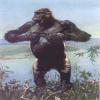
WARNING! A strange person has just joined your forums!
Marblehead replied to DreamBliss's topic in Welcome
Ah!, but you have set limits on the herd animals, have you not? Isn't it possible to be a herd animal at times and yet be a lone wolf other times? That is, isn't it possible to have the "American Dream" and yet maintain great freedom and individuality? What I am speaking to is the security of the "American Dream" but yet the freedom of the lone wolf - the individual. I do agree that limiting ourself to just one philosophy of life will, in most cases, prevent us from experiencing our full potentials. Don't you think that it is possible for a person, nearly all people, to seek and attain security in life and yet, on occcasion experience the life of a free spirit?


